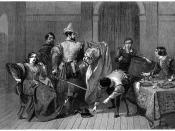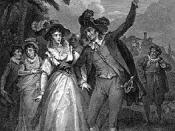"What values do 'The Taming of the Shrew" and "10 Things I Hate About You" share in common? Consider the context of each text and how those values have been represented in the original text and transformed into modern text."
When a composer appropriates a text, similarities and differences are created in context and values. Composer Gil Junger, has appropriated William Shakespeare's text 'Taming of the Shrew' introducing film medium and visual techniques to create the teen film '10 things I hate about you'. The clever appropriation utilises both similarities and differences in values making the connection between the two texts noticeable whilst studying. Some of the main values shared between the original and the appropriation include gender roles, social order and importance of money.
Composed and based in the Elizabethan Era, the original Taming of the Shrew holds a very patriarchal plot line, presenting an obvious male dominant society.
In a society the male is portrayed as the dominant provider and the woman is portrayed as the weak submissive mate who obeys her male companion. Shakespeare uses Petruchio to display male dominance, using his cruel techniques to 'tame' Kate 'I swear I'll cuff you if you strike again'. She is forced to obey Petruchio's every command, not only because she is his wife but also because of the role women in the Elizabethan era were constrained to fulfil. By Taming Kate, Shakespeare presents a message of social order. Although Kate started as a 'shrew' we see a final submission of acceptance of the patriarchal system in her final speech. " And place your hands below your husband's foot. In token of which duty, if he please, my hand is ready, may it do him ease." Shakespeare has chosen to use submissive tone connotations such...


